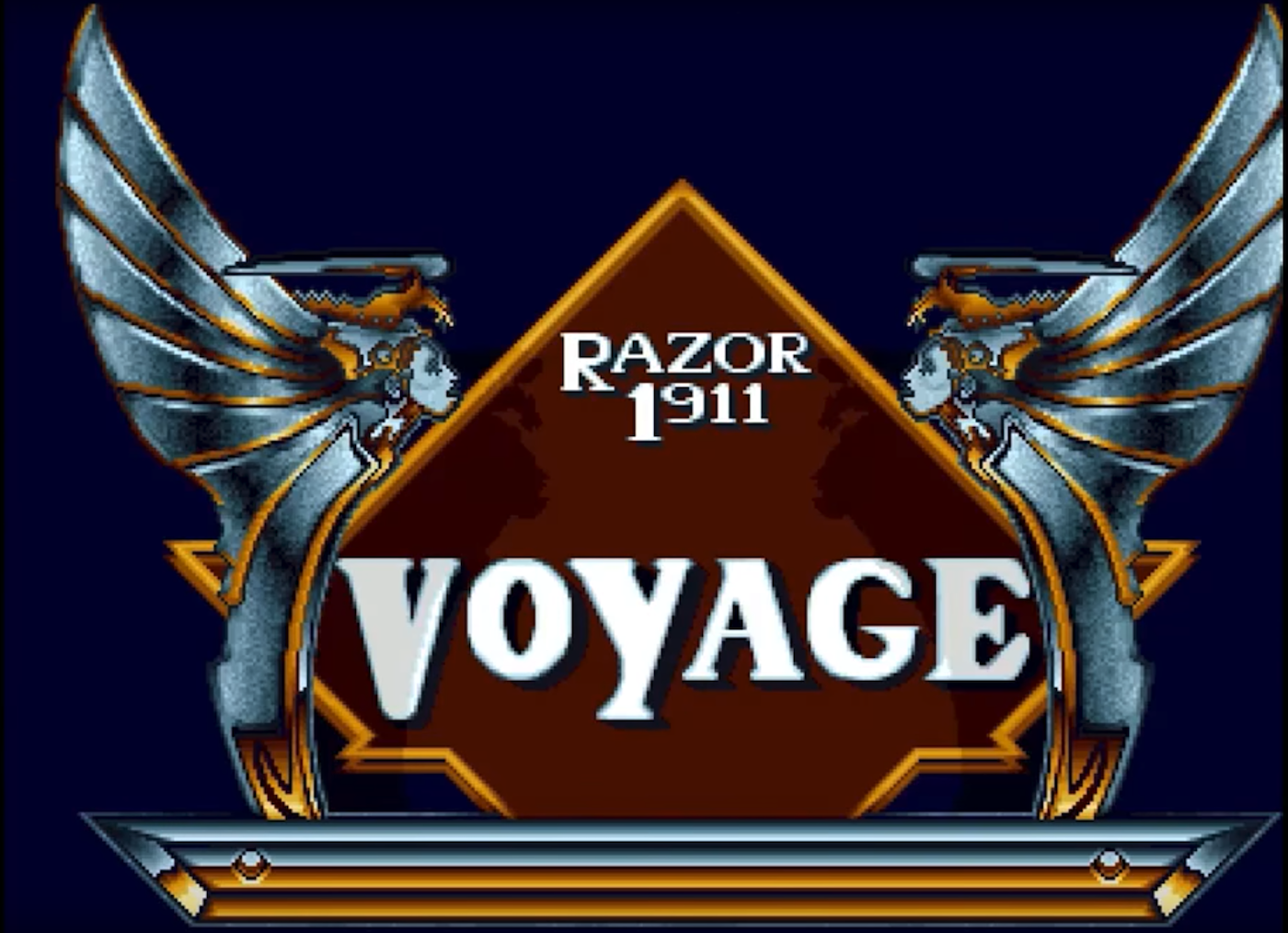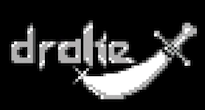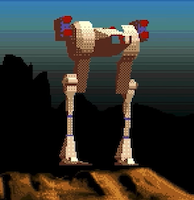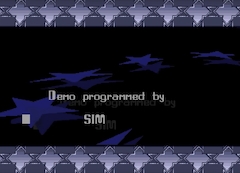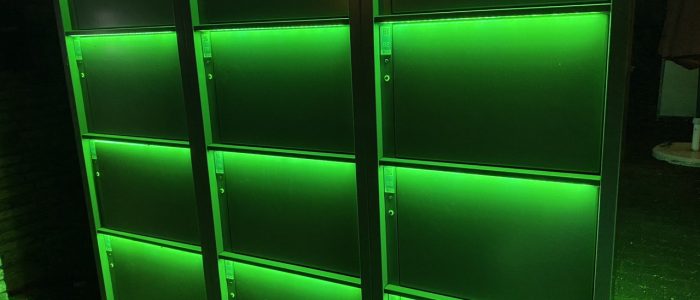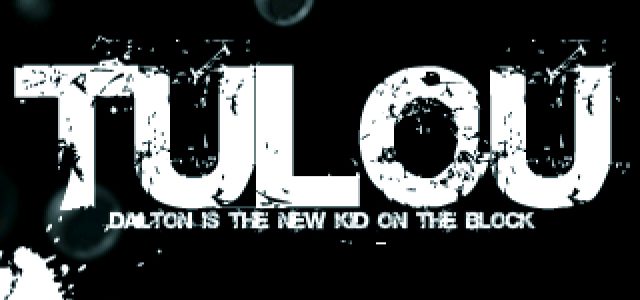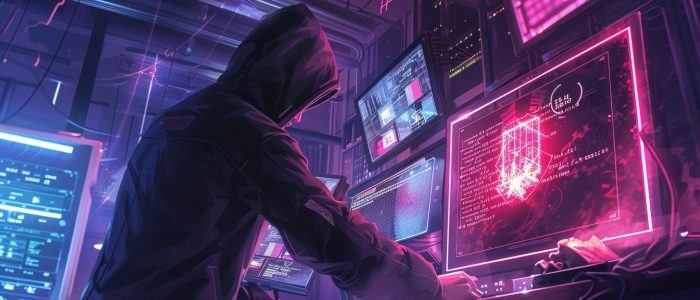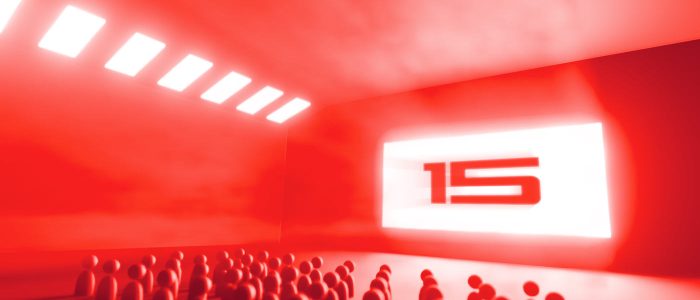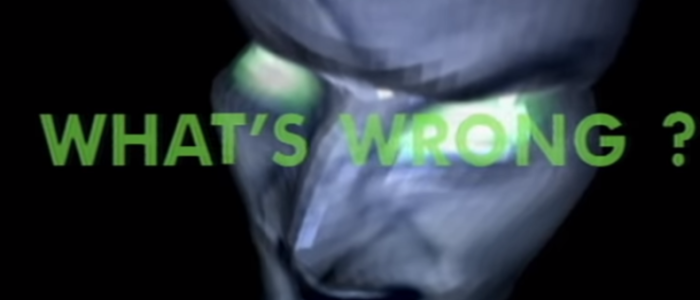From a nerd meeting at Karstadt to winner demo. Sim of Razor 1911 tells the whole story behind the group's classic Amiga masterpiece Voyage.
Voyage by Razor 1911: from a nerd meeting at Karstadt to winner demo
by Lars „Ghandy“ Sobiraj of Nukleus
Voyage by Razor 1911 is one of the most impressive demos ever on the Amiga. Jurassic Pack spoke to the coder Sim 30 years later. The big barrier was to find the contact details of the programmer after so many years. I was lucky because a friend from Hannover did leave his real name in the second demo from Sim. And he could be reached promptly by email. He gave me the email address of the coder directly. Die deutschsprachige Version des Gesprächs ist hier verfügbar.
In 1991, the world was still fine for fans of the Commodore Amiga. New games were coming out all the time, and there was no shortage of commercial user software. At that time, contacts to the scene were often made in the department stores of the big cities. This is what happened in the case of Guerkan Demirci aka Sim.
The Hanoverian left an incomparable digital scent mark months after first making contact with the demo Voyage. For his group Razor 1911 at the time, this was the absolute high point. And also the beginning of the end, at least as far as their legal activities on the Amiga were concerned.
The Making of Voyage by Razor 1911
The megademo Voyage by Guerkan Demirci, better known as Sim by Razor 1911, is still unforgotten in the Amiga demo scene. Its name has by the way nothing in common with a SIM card by the way. There is no special story behind it, the programmer explains to us almost 30 years later. He simply constructed his name Sim from scratch. And Guerkan never really had much to do with the scene.
After two demos, his scene career was already over. The serious side of life, studying and looking for a job, were more important to him. And then there was this: A few years later, the market for the Amiga collapsed. In the mid-90s, the demo- and cracker-scene experienced a belated crash. But even though not so many productions come out anymore, the scene still exists. And some demos are still convincing today because of their quality and creativity. But let’s go back almost 30 years in history …
Maybe you could just introduce yourself for a start.
Ghandy/JP: Sim, maybe you would like to introduce yourself for a start.
Sim: My name is Guerkan. I am 49 years old and work as a programmer in Berlin, where I live with my family. In my free time, I like to watch TV series. I also buy so many e-books that I will probably never read in my life.
Software was exchanged in the schoolyard
JP: You met some members of Razor 1911 in a department store back then. Tell me, how did that happen?
Sim: I went to Quelle or Karstadt one afternoon to code my first ticker in Basic on a C64, because I didn’t have my own computer yet. Later, these were places where computer nerds met to find like-minded people.
The scene met in the PC departments of large department stores.
I met someone there who gave me 100 Deutschmarks (DM) for a small demo I was supposed to program for him, which I did. But his friends soon found out that he hadn’t created the demo himself. They grabbed him by the scruff of the neck and forced him to take me to the next meeting in the department stores‘. That’s how I met Drake and Murdock with a few others. They were both pixelling beautiful pictures on the Amiga.
We met very often and I wrote on the Seka (assembler) to make these pictures move. At some point, the ticker with the very large letters and the rotating blue polygon stars in the background was created in this way. At that time, it was still something special to combine 3D and pixel graphics.
One of our friends knew Angel of Death from Razor 1911. He helped us to become a member. We were very proud of this because Razor 1911 was a dazzling group and we secretly believed that others envied us because of our membership.
The Voyage programmer only had eyes for his own megademo
JP: Why did Razor 1911 leave the Amiga so early, do you have any information about that?
Sim: Voyage was the last demo. And RZR also concentrated on MS-DOS as a platform when it came to cracks a short time later. Cracks for Windows games followed years later. Since spring 2014, by the way, a few older people are on the road again with their own releases.
I hardly noticed what was going on within the group worldwide. I simply lacked interest in it. It was the time of the Amiga mega demos. Our goal was to create a fascinating mega demo. It was to take another two years before we were ready to finally release it on The Party 1 (TP1). Also for Razor 1911, this was the first and, as far as I know, the only mega-demo released.
I started getting into the PC after that. The 486 was the new superstar among computers at that time. Shortly after that, the Playstation 1 from Sony (PSX-1) for 3D games came on the market and towards the end of the 90s, with the arrival of PC graphics cards, the demo scene was established on the PC.
Circumstances extremely unfavourable: the power constantly failed
JP: You put the individual parts of the demo together during TP1. Why didn’t you prepare that, then you could have enjoyed the party? There must have been about 1,000 people there you could have met ;-)
Sim: In order to finalise the megademo, I had to write a lot of data manually onto the disk. If I had done this at home, last-minute changes would not have been possible. I did not have an automation of banal and manual steps. I thus put myself in an uncomfortable situation, which got worse.
Then I had experienced a few smaller demo parties in Hannover, but TP1 was my first outside Germany. I didn’t realise at the time that this situation would put me in stress. Someone seemed to have noticed and I was given a place in a smaller room. This meant that I was now completely shielded from the party and didn’t hear a thing. A highlight there was when µC2MantronixµC4 came into the room with several to play a piece of music on a flute consisting of a sweet.
So now I was making the final changes and assembling the data, with the computer failing out of the blue several times. I noticed at one point that someone was playing with his foot on the power distributor. Despite the foot and the stress, I finally managed to make an executable diskette.
Almost everything from Voyage 2.0 preserved for later generations
JP: On the phone you spoke about a version 2.0 of Voyage. Where can you find it? I did not find it on Aminet. What is the difference to the compo version?
Sim: The version that is circulating already contains almost everything. I think we added it afterwards.
Who seriously wants to see exploding earth balls in demos?
JP: What else would you have liked to include, had there been more time?
Sim: Another version contained a scene with a globe that exploded into pieces. That seems to have been lost. Maybe because nobody wants to see the world destroyed.
Copy protection for Voyage taken from an Amiga game
JP: You took over the copy protection from the shoot ‚em up S.W.I.V. to include it in your demo. Why does a demo need copy protection?
Sim: Other programmers in Razor 1911 were leveraging copy protection in games and so there was a very brief period when I was interested in it myself. I had this game at the time (maybe it was Silk Worm) and through reverse engineering I learned the workings from said algorithm. It encrypted the programm and made reverse-engineering difficult.
At the time, I thought it was a good idea to encrypt my own source code with it. You could still copy the demo. Only the commands in the programme code were mixed up. It was only put in the right order during execution, but this depended on the timing of the system. Accordingly, it no longer worked on the later AGA version of the Amiga. I learned that there were some demos that had to be fixed in order to play them on AGA.
With the Voyage, it was apparently particularly difficult because reverse engineering was hampered by the algorithm. I am glad that someone took the trouble to do this anyway. There would also have been the option of asking me for the source code. But in the meantime, neither I nor anyone else owns the source code.
Galahad removed the encryption in the Trackloader
Yes, Galahad from Scoopex (and Fairlight) took the trouble to create a runnable version for all Amigas. He had to overcome numerous hurdles to do so. What ranking did you expect at the time? Unfortunately, there was no award ceremony at TP1.
I only came out of the room at the screening and was already exhausted from too little sleep. I don’t know what I was expecting.
Two years of development – during puberty an eternity!
JP: How good was the support from Razor 1911? After all, you were provided with two of the best pieces of music so far. But that’s not the only reason why Voyage is still unforgotten today.
Sim: As already described, it took us two years to finish all parts of the demo. That is a very long time in the life of a student. I was searching for myself at that time and accordingly emotional decisions were part of it. At some point I lost motivation and thought of giving up.
I remember a phone conversation with Sector9 in which he gave me moral support and convinced me to keep working on it.
I owned the music piece of Codex very early on. Shortly before it was released, he reworked it again. µC2MantronixµC4 gave me his piece of music at short notice and as a surprise. I knew that both musicians were among the best in the demoscene. I was all the more pleased that it was the musicians themselves who wanted the music pieces in Voyage. It also helped to be a member of Razor 1911, because otherwise I might never have met them.
We were all fans of electronic music
JP: What’s with the Jarre part (man running in a circle in a cube)?
Sim: You must mean the piece of music by Mantronix; the second piece in Voyage. But we were all Jean-Michelle Jarre fans somehow. Everyone also listened to Kraftwerk, Depeche Mode, Anne Clark and so on. Whatever electronic music you could get your hands on at the time.
3D models for spaceship pre-painted on paper
JP: I see, that’s where the clear allusion to Jarre’s music in the Running Man section comes from. Someone asks at Pouet, is the spaceship in the demo animated or calculated?
Sim: I read through the question on Pouet. The question is perhaps interesting because it expresses a devaluation of animation over real-time calculation. However, such a valuation is often also influenced by the decade in which it was made, and I would like to describe here what value things had for me at that time.
Everything that can be seen in Voyage is calculated in real time. Every movement is based on a mathematical formula. There were simply no programs at the time to calculate the positions between two key frames. The mathematical interpolation of movements was part of the demo, as was the description of key frames as programme code.
Everything in Voyage is calculated in real time
External software for generating 3D models only worked reasonably for me on the PC. I pre-painted the 3D models in Voyage on paper and entered the 3D values directly into the programme code. The Amiga was not meant to do the work for humans. It served to create works, which we then did with fascination, without sparing the effort.
After 30 years, these things seem incomplete and rough. But back then, every dot of colour was magical. Every movement triggered a fascination in me and I wanted to see what would happen next. I didn’t realise at the time that we were in the „pioneering days of computer graphics“, as people would describe it in retrospect. Rather, I was inspired by things I saw in films and in advertising, and the only question I could think of was: „Looks cool. And how do I get it to work on the Amiga?“ Any means would have been fine with me. But what I had at my disposal was only Seka (assembler). Others could only use a Soundtracker or Deluxe Paint (as a painting programme).
Endlessly long tickers instead of an own story
JP: Compared to the other demos, Voyage wasn’t even long. But today’s demos don’t get 15 minutes together. Why did you put so much in there? Member lists, Razor boards with all the numbers etc. pp.?
Sim: In the beginning, my idols were the megademo by Mahoney & Kaktus and RSI. If you look at these demos, you can see that back then the ticker was the centre of attention. The more you wrote there, the better, we thought. At Razor, there were many members and many boards that wanted to be mentioned. The people behind these names were happy about it, and we saw it as a deliberately long running script. Storytelling instead of blathering was then the motto of another demo at TP1, which eventually did better than Voyage with the audience for good reason.
This demo will remain unforgotten forever
JP: At least the longest story with a length of almost 45 minutes was the winner Odyssey of Alcatraz on TP1. In April 1993, Speed was released as a demo by you. Why did that end? Did you not get any more support, or was the air simply out?
Sim: The Speed demo has no ticker and is based on animation. For me personally, it’s more progressive, more experimental and tells a lot about my impressions outside the demo scene. It was the early years of the techno scene, and I was out partying with friends. I was experimenting with a camera and a digitizer at the time.
In Speed, I interwove these digitised recordings with 3D elements. Technically, it was a video player with 3D graphics over it. I call this a disk player for the Amiga, because at the same time the CD player for multimedia got its start on the PC. Today my sources would probably be 3D scanners and footage from drones to capture the technical time in the demo.
But back then, I wrote some magazine articles about voxel graphics on the Amiga after the Speed demo and started working in the games industry shortly after. I was busy earning my own bread. So I stopped thinking about new demos.
Speed showed the influences of the emerging techno scene at that time.
JP: You gave your phone number in the demo. Did people often call you? And if so, what did they want from you?
Sim: A few times I was called by people from the demo scene. I don’t remember exactly what we talked about.
JP: Are you still in contact with the other people? Codex, Drake, Murdock, Tip & Mantronix, what happened to them? Were they able to use their creativity in their jobs?
Sim: Different. Some I never met again. But others, like Tobias, I still see very often. He sometimes plays me new pieces of music. A few years ago I met Codex again to think about ideas for the VR glasses with him. I have exchanged ideas with others on social networks. Almost all of them work in IT. Whether they are creative at work, I cannot judge.
Sim finally landed as a senior engineer at Berlin-based Dolby Germany.
JP: Guerkan, you finally landed in Berlin at Dolby after several years as a freelancer in various games companies. What exactly do you do there?
Sim: I moved to Darmstadt after graduating from high school for my first job in the games sector. I learned a lot of new things there. At some point I started studying because I didn’t understand a lot of higher mathematics. I then always stayed in graphics programming.
Now I work in the field of media processing. In concrete terms, this means that the compressed, transmitted and replayed video should lose as little quality as possible in the end. It also involves the following problem: during recording, colours turn into numbers and on the television they turn back into colours. Does every viewer finally get to see the same colours?
Thank you for the interview. I had a lot of fun travelling 30 years into the past in my mind.
JP: No, on the contrary. I have to thank you! All the best for the future, Guerkan!
Final comment: Some months after this interview, in Autumn 2021, we did meet at Deadline demo party for the first time for real. Guerkan brought two friends with him who were never in touch with the demo scene. For them it was quite impressive, for us all it was a real nice evening and too many beers and whiskey. ;-)
In case you’ve missed it, you can read the german version of the interview here.
